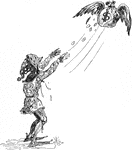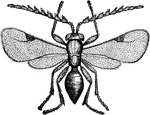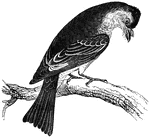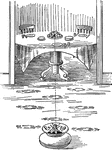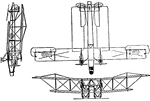
Handley-Page Twin Liberty Motored Type O 400 Bomber
This illustration shows three different views of a Handley-Page Twin Liberty Motored Type O 400 Bomber.

Henson's Flying Machine
A flying machine invented by William Henson in the mid-19th century. Although numerous attempts were…
The Grey Heron
"The Grey Heron in full flight. In the heron the wings are deeply concave, and unusually large as compared…
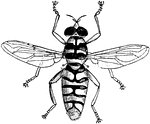
Hoverfly
Flies in the family Syrphidae are commonly known as hoverflies, flower flies, or syrphid flies.As their…

Ichneumon
The insects of the Ichneumon family have long,slender bodies, long ovipositors and long antennae.

Ichneumon
The insects of the Ichneumon family have long,slender bodies, long ovipositors and long antennae.

Ichneumon
This female parasitic wasp has a strong boring ovipositor for laying eggs in holes she drills in trees.

Ichneumon
This female parasitic wasp has a strong boring ovipositor for laying eggs in holes she drills in trees.

Ichneumon Fly
The Ichneumonoidea are insects classified in the hymenopteran suborder Apocrita. The super family is…

Ichneumon Fly
Ichneumon flies have slender bodies, veined wings with the veins enclosing several spaces or cells,…

Ichneumon Fly
Ichneumon flies deposit their eggs upon the bodies of other insects and larva. The larva live on the…

Right Wing of Kestrel
"Right wing of the Kestrel, drawn from the specimen, while being held against the light."—Pettigrew,…

Northern Lapwing
"The Lapwing with one wing fully extended, and forming a long lever; the other being in a flexed condition…
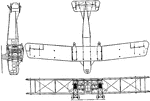
Lawson Type C-1 Twin Liberty Motored Aerial Transport
This illustration shows three different views of the Lawson Type C-1 Twin Liberty Motored Aerial Transport.

Loki as a Fly on Freya's Cheek
Loki, the mischief maker, turns into a fly to steal Freya's golden necklace. As Freya, the goddess of…

Maize Kernels Destroyed by Maggots
Illustration of two small corn (maize) kernels being eaten by maggots. One maggot is still inside one…

Man and child
An illustration with a man and a child watching birds fly overhead while standing on a rock.

Mosquito
"A small two-winged fly, Culex pipiens, of the family Culicidae, suborder Nemocera, and order Diptera,…

Moth
The wings are long; the primaries blunt; the secondaries small. The thorax is square with a central…

NC. 4 Flying Boat
This illustration shows three different views of the NC. 4 Flying Boat. It has a 1600 horsepower engine.

Larva and Chrysalis of the Onion Fly
The larva of the onion fly are maggots or footless grubs. Many live in the interior of roots, stems,…
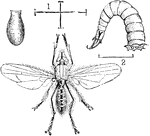
Onion Fly, Larva, and Pupa
Onion flies are similar to common houseflies in appearance. The larva burrow into onions and eat near…
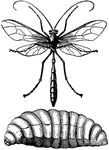
Long-Tailed Ophion
These are large or very large creatures, black or honey-yellow in color, and the bodies are transversely…
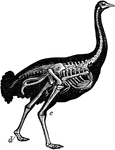
Skeleton of Ostrich
"Shows the powerful legs, small feet, and rudimentary wings of the bird; the obliquity at which the…

Red-Legged Partridge
"The red-legged partridge with wings fully extended as in rapid flight."—Pettigrew, 1874

Little Penguin
"The Little Penguin, adapted exclusively for swimming and diving. In this quaint bird the wing forms…

The Pigeon
"The Pigeon flying downwards and turning prior to alighting. The pigeon expands its tail both in ascending…
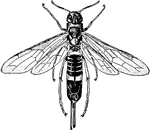
Pigeon Horntail
An insect known as the pigeon horntail (Tremex columba) deposits its eggs, by means of a strong, piercing…

The Red-Headed Pochard
"The Red-headed Pochard in the acting of dropping upon water; the head and body being inclined upwards…

Pterodactyle skeleton
"So peculiar and strange is the structure of these animals, that the first specimen discovered was classed…

Scorpion
"Drawing from tlife of the Italian scorpion Euscorpius italicus, Herbst, holding a blue-bottle fly with…

Scorpion
"The same scorpion carrying the now paralysed fly held in its chelicerae, the chelae liberated for attack…

Cayley's Aerial Screw
A flying machine invented by George Cayley. It is an early model of the helicopter.
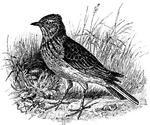
Skylark
"The common lark of Europe, Alauda arvensis: so called because it mounts toward the sky and sings as…


